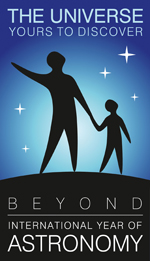Proceedings Published From 2009 Women in Astronomy Conference
11 January 2011
The Organizing Committee of the 2009 Women in Astronomy conference has published the proceedings from the year's Women in Astronomy and Space Science Conference III, titled "Women in Astronomy and Space Science 2009: Meeting the Challenges of an Increasingly Diverse Workforce." The conference was held on Oct. 21-23, 2009, at the Inn and Conference Center, University of Maryland University College, Adelphi, Md.
Nearly three hundred women and men attended the three day conference, which focused on the diversity of today's scientific professions and the challenges of tomorrow's leaders. Speakers shared their personal route to careers in areas such as instrument development, science management, non-profit organizations, and aerospace administration. Topics presented included: best practices for recruiting, promoting, mentoring, and retaining women and minorities; unconscious biases that influence how people are evaluated and demographics within the science field. There was a focus on the senior scientists who mentor and manage the workforce, the mid-career scientists who face the full range of challenges, including balancing home and work, and the early career scientists who represent the future of the field.
A short video on the highlights and themes of the Women in Astronomy Conference for 2009.
Space science research institutions have traditionally been populated by a majority male workforce, but this is rapidly changing. Today's workforce is much more diverse with individuals from various cultures and backgrounds increasing percentages of women and minorities and multi-generational workforces engaged in team work.
One of the interesting aspects of the progress of women, who only a generation ago made up a small percentage of the space science and astronomy workforce, is the degree to which women mentored each other, self organized, and shared lessons.
"One recurring theme of the meeting is the power of mentoring in all its forms: formal mentoring, informal mentoring, peer mentoring, and group mentoring," said Dr. Anne Kinney, Director, Solar System Exploration Division, NASA Goddard Space Flight Center, Greenbelt, Md. "Creating an atmosphere where there is engaged interaction, especially bridging the gap between senior career and early career scientists, can set the stage for all forms of mentoring. While senior career scientists may have worked alone in their offices, early career scientists are part of a generation that shares knowledge and experience in a more fluid environment."
In the sixteen years since the first Women in Astronomy meeting, women now make up a much larger fraction of the field. Previously, American Astronomical Society membership for those under the age of thirty was less than 20% female, today it is 40%.
Early career planetary scientist, Carrie Anderson from NASA Goddard said "I was really excited to see the vast number of women who showed up for the meeting. They came from all over the country and I felt such pride to be among such an amazing group of women."
As the field struggles to increase its diversity in underrepresented minorities, these lessons for success among women can prove valuable. One of the goals of the meeting was to capture successful practices in the hope of applying them in ways that increase the numbers and the success of minority scientists in the field of astronomy and space science.
Attendees of the 2009 Women in Astronomy and Space Science Conference III Credit: NASA, Jay Freidlander
While in the past the pipeline for minorities was insufficiently filled, the situation is changing. Strategies for success of minority scientists were discussed at the conference including Bridge Programs involving Historically Black Colleges and Universities (HBCU), focusing on the transition from high school to college, and the transition from undergraduate to graduate school. The aim of Bridge Programs is to provide a pathway for success into the science discipline.
Roughly one-third of all Science, Technology, Engineering and Math bachelor degrees earned by African-Americans are from HBCUs. Engaging HBCUs and setting up and maintaining an educational pipeline is an important aspect of increasing the representation of minorities in the sciences.
In attendance were managers from Carnegie Observatories, Gemini Observatory, Harvard Smithsonian Center for Astrophysics, National Optical Astronomical Observatories, National Radio Astronomy Observatory, National Science Foundation, National Aeronautics and Space Administration, Massachusetts Institute of Technology, Planetary Science Institute, Search for Extraterrestrial Intelligence, Space Telescope Science Institute, Spitzer Science Center, and Yale. Professional societies in attendance included: the American Astronomical Society, American Institute of Physics, and American Physical Society. Nobel laureates and representatives from fifty seven universities were also present at the conference.
To view the entire WIA proceedings document, visit: http://wia2009.gsfc.nasa.gov/
NASA's Goddard Space Flight Center
Search IYA2009 Updates

National Nodes: 148
Organisational Nodes: 40
Organisational Associates:33
National Websites: 111
Cornerstone Projects: 12
Special Task Groups: 11
Special Projects:16
Official Products:8
Media Partners:22


